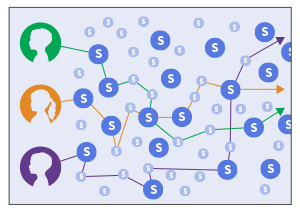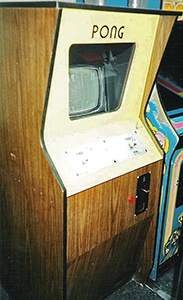
For those of us who have been around for a while, Digital Learning Day (or DLDay), happening February 17, has special significance. I fall into the “around for a while” category because I had both a TRS-80 and an Apple II. How cool is that? I also had long, blond hair, but let’s not dwell on the past.
The special significance of DLDay for us is that so many of our dreams are coming true. Blended learning is a great example. For many years, the technology aspect of education was a little standoffish. Because of limitations of hardware and software, it was challenging to use technology in the ways we thought were most effective.But because of recent software advances, blended learning is making its way into more and more classrooms. And it is paying off. When you combine the expertise and caring of the teacher with technology, you have a learning environment in which students are most likely to benefit.
The variety of blended learning environments contributes to this effectiveness. As every teacher will attest, no two classrooms are the same. The students differ, and so does the technology to which they have access. Fortunately, the best of today’s software allows students to use whatever devices are available. The same software may also let the teacher know when a student could use some individual or small-group interaction.
 The reason some software can do this is because it uses an innovative form of artificial intelligence. It actually learns from students as they interact with the technology. And this learning is not just from one student’s performance. The technology analyzes the performance of many students and identifies the most beneficial learning paths. (Hey, this is like REAL digital learning ... get it, the digital thingy is learning. Did you just roll your eyes at me?)
The reason some software can do this is because it uses an innovative form of artificial intelligence. It actually learns from students as they interact with the technology. And this learning is not just from one student’s performance. The technology analyzes the performance of many students and identifies the most beneficial learning paths. (Hey, this is like REAL digital learning ... get it, the digital thingy is learning. Did you just roll your eyes at me?)
When we talk about machine learning, it’s important to recognize that the most advanced technology is not simply aggregating a series of zeros and ones to compile a score that shows if a student gets it or not. The variables that are analyzed include the kinds of graphics, the types of activities a student is completing, the auditory prompts, response patterns, and many other subtle aspects of learning.
So, on this Digital Learning Day, we should be grateful for something else. The latest generation of software that supports blended learning also affects the teacher-student relationship in other ways. It encourages personalized and personal learning.
Personalized learning is something we have talked about for more than 50 years. (Let me give a shout out to a wonderful friend and an icon in education and psychology, Dr. Walter Burke Barbe. His book titled Educator’s Guide to Personalized Reading Instruction was published in 1961. Dr. Barbe was also the editor-in-chief of Highlights for Children magazine and one of the founders of the International Reading Association.) Technology has finally reached the point where it can provide engaging and meaningful interactions that are most likely to appeal to a student.
 From its beginning, we knew that technology had the potential to personalize learning because it attracted some kids so strongly. Gamers from Pong (look it up if you don’t know it) to Minecraft are TOTALLY into their digital worlds. We just couldn’t figure out how to build on this sense of commitment with the majority of kids to teach them school stuff. But that has changed recently. A well-designed digital platform can keep students engaged, help them learn important content, and build cognitive skills that can be generalized to every endeavor. When you look at students using some of the latest digital learning tools, you really do get the feeling that something great is happening.
From its beginning, we knew that technology had the potential to personalize learning because it attracted some kids so strongly. Gamers from Pong (look it up if you don’t know it) to Minecraft are TOTALLY into their digital worlds. We just couldn’t figure out how to build on this sense of commitment with the majority of kids to teach them school stuff. But that has changed recently. A well-designed digital platform can keep students engaged, help them learn important content, and build cognitive skills that can be generalized to every endeavor. When you look at students using some of the latest digital learning tools, you really do get the feeling that something great is happening.
The personal part of blended learning is even more important. The relationship between the teacher and the student is the most important aspect of education. On the DLDay website, you’ll see a section about last year’s DLDay Live, highlighting “examples of how great teaching, combined with effective technology, are positively impacting America’s schools.”
The key phrase here is “great teaching,” and that’s where the “personal” comes in. Great teachers always make it personal, and their students know it.
In a sense, then, the best digital learning tools that are available today extend the expertise of the teacher. They provide a learning platform for the student that is consistent with the instructional practices of the teacher. Ideally, the teacher can then further the student’s learning through talking, listening, guided activities, and other personal interactions. All of these show students that they are valued and help them gain the confidence in their own abilities to grow as learners, even when they have to struggle to do so.
Want to do more with digital learning for your students? Click the button below to learn how Velocity is changing the face of digital learning by creating the ultimate in personalized instruction.
Is your school or district participating in Digital Learning Day on February 17? Tell us about how you are using educational technology in the comments field below. Click here for a schedule of DLDay online events.



